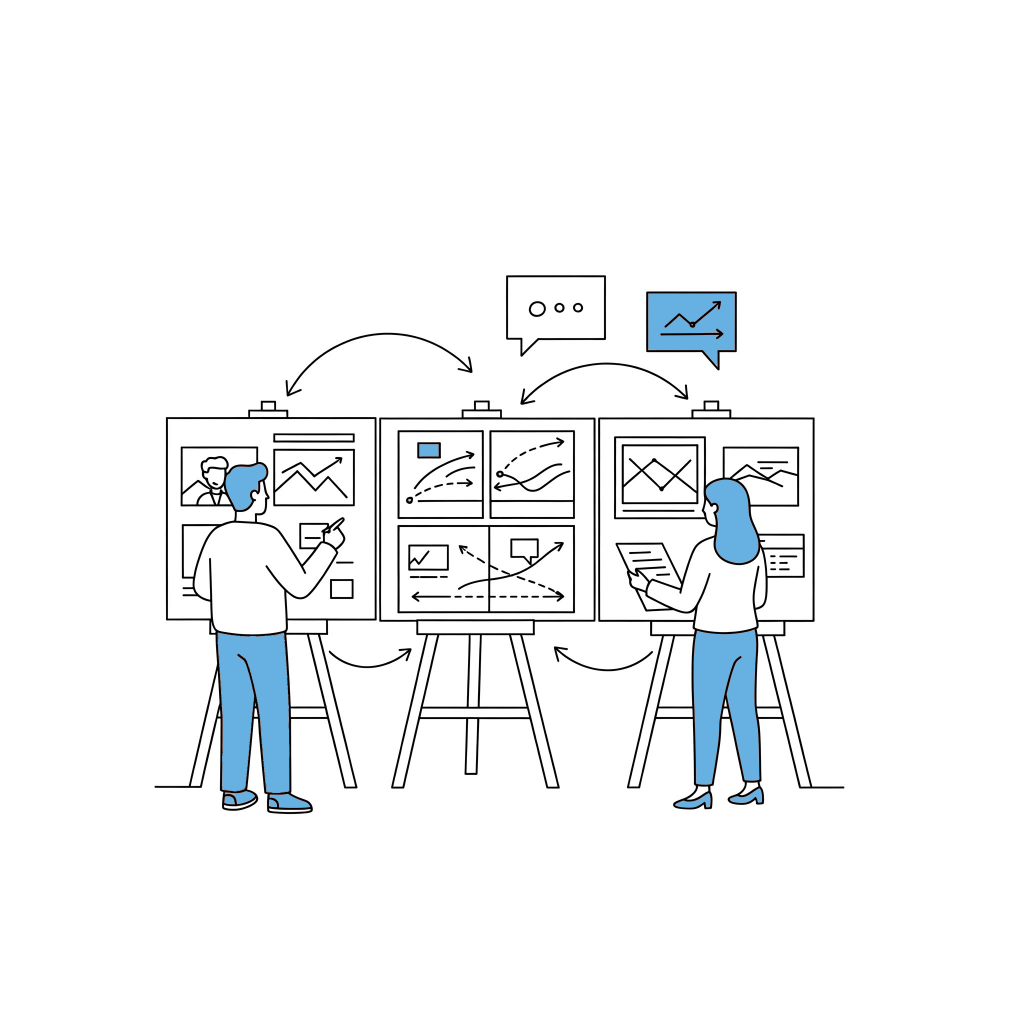Where do great ideas come from at IT consulting boutiques? From everyone, but especially from consultants who have had recent engaging experiences with customers, or engineers that are motivate the apply a new technology.
Use these ideation tools to discover the pool of possible accelerators and products that your boutique is uniquely positioned to deliver.
Storyboard
Illustrations displayed in sequence for the purpose of visualizing an interactive experience. A good choice if you already have a customer segment and problem areas in mind. Helps assess product desirability and viability risks.
- Have the team members brainstorm 6 to 12 stories
- Sketch out the storyboards to describe the customer experience, and how they will experience value
- Create faux customer quotes to provide context about pain points and benefits from their perspective
- Be specific about who the customer is and what segments you are targeting


Fake Press Release
Prepare a faux press release for an existing idea, which explains the value proposition for both the customer and your organization. When drafting the press release, consider:
- “How does it improve the life of the customer?”
- “What are the benefits to each stakeholder?”
The press release may be prepared in advance of storyboard and other workshops.
One variation of the faux press release is to use a fake customer letter instead. Create a letter from your customer, which explains how happy they are with the new product or accelerator. To better explain the value to your own business, you can draft an imagined reply, which explains how much this has helped your own business.
Card Sorting
Use cards with peers and customers to generate insight. This tool focuses on the most overlooked product risk dimension by technical leaders – desirability.
Prepare with cards created in advance for customer tasks, pain points and potential benefits. Include blank cards as well to fill out during the exercise.
Facilitate by reviewing categories of customer tasks, pain points and possible opportunities the team has witnessed in the market. Participants are required to map the cards to categories and rank them by importance.
Guidelines include:
- Talk out loud as you explain and rank cards
- Make a habit if asking if any cards are missing as you move between categories
- Assign one person to take notes during discussion to capture qualitative statements made by participants
To summarize and identify next steps, identify any themes you have discovered. Take a tally of how each participant has ranked their top 3 customer tasks, pain points or opportunities.

